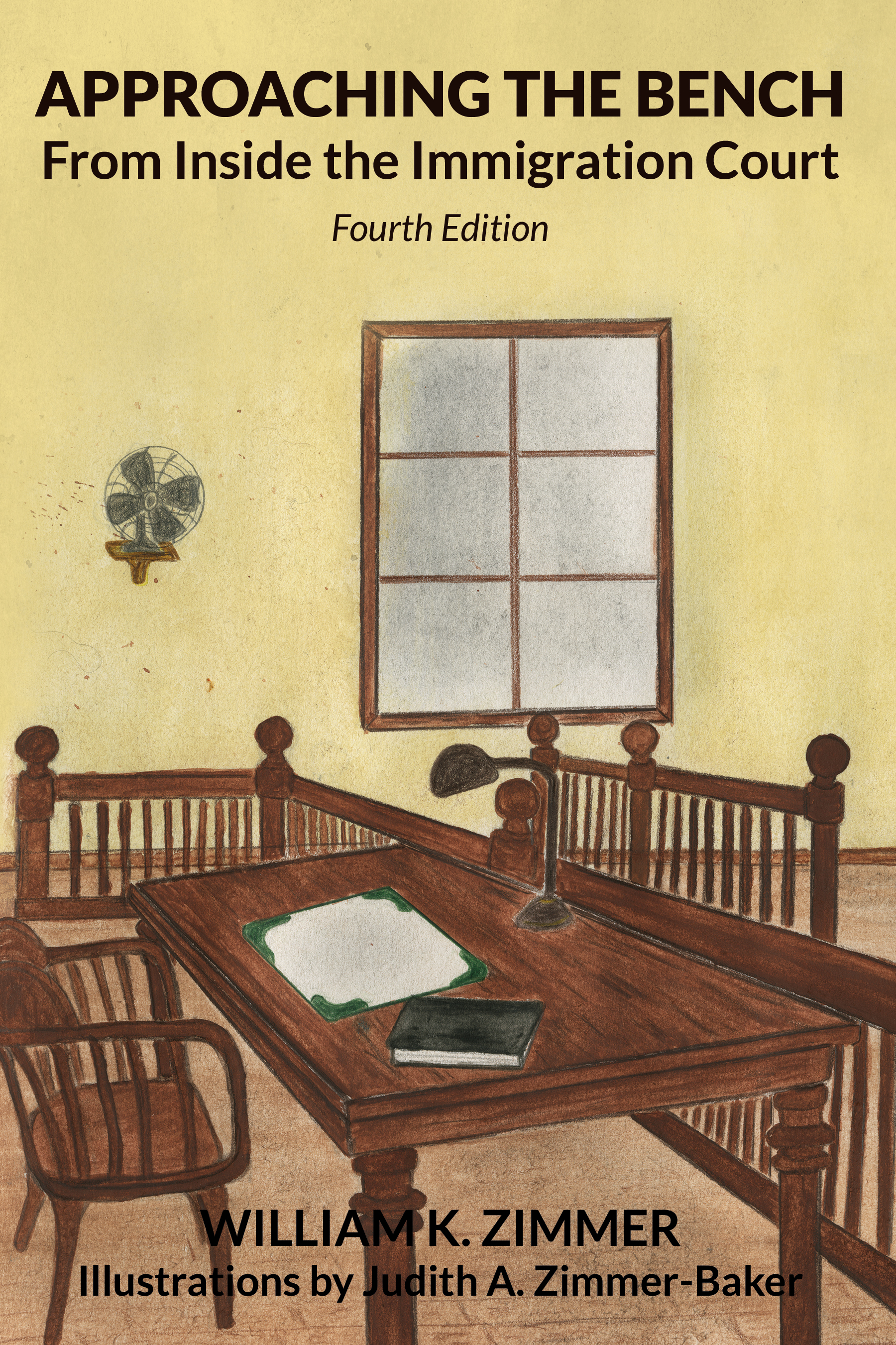EWI
.jpg)
Government Attorney: Did you go over this application with your attorney?
Respondent: Yes.
Government Attorney: Did you understand this application?
Respondent: Yes.
Government Attorney: Did you sign this application?
Respondent: Yes.
Government Attorney: Is this your signature on this application?
Respondent: Yes.
Government Attorney: If you were admitted to the United States as you testified why did you indicate “EWI” as your manner of entry on this application?
Respondent: I thought “EWI” meant everyone was inspected.In the world of immigration, “EWI” is commonly used as an acronym for “entry without inspection.” This is an example of how real or feigned ignorance of the jargon used by immigration professionals can frustrate cross examination that is based on the presumption that everybody is familiar with the same terminology.
If you are conducting a cross examination keep it short (which almost never happens in immigration proceedings). In addition, it's almost never a good idea to use a question beginning with "why" because it allows for an explanatory response. Let the opposing party elicit an explanation on redirect exam if there is an explanation.
Finally, the attorney in a well executed cross examination will already know the correct answer to every question that is asked. Cross examination should not a fishing expedition. For this reason, the so called "cross examination" technique can deteriorate from a precise procedure conducted with a sharp scalpel into a beating with a blunt cudgel which is better described as an interrogation.
Immigration Court hearings evolved from investigatory proceedings conducted by three-person special inquiry boards (1903 - 1952) to solitary special inquiry officers (1952 - 1996) to the changed title of Immigration Judges (1996 - present). See, respectively, section 24 of the Act of March 3, 1903; section 101(a)(4) of the Immigration and Nationality Act of 1952; and 1996 - Pub. L. 104-208, §371(b)(9).
Unlike the special inquiry officer in the early 20th century when hearings were more closely linked with the inspection process, current day removal hearings usually take place long after the apprehension of the alien has occurred and the inspection process completed. No matter how many questions are asked of witnesses, there is almost never any way to independently confirm or rebut testimony within the context of the hearing itself.
Furthermore, the immigration court does not have investigators or any means of conducting investigations and the Immigration Judge has no authority to require or control a Department of Homeland Security investigation.
Thus, the removal hearing is at best a very dull investigative tool, even though it was originally designed as a means of investigating the admissibility of an alien who had not been found "to be clearly and beyond a doubt entitled to land" by a primary immigration inspector. See section 24 of the Act of March 3, 1903. It should also be noted that the current description of the duties of an Immigration Judge in section 240(b)(1) of the Immigration and Nationality Act, as amended, is essentially the same as the description of the duties of special inquiry officers in section 242(b) of the 1952 Act.
Due to the historical investigative nature of proceedings conducted by immigration courts which evolved from the inspection process at borders and seaports combined with onerous case loads that deprive even the most diligent government attorneys of preparation time, it seems that "cross examination" during immigration court hearings generally falls into the category of interrogation.
Attorneys accustomed to more formal courtroom procedures might occasionally be surprised at what sometimes appears to be the rough and tumble environment of immigration courts.
If you are conducting a cross examination keep it short (which almost never happens in immigration proceedings). In addition, it's almost never a good idea to use a question beginning with "why" because it allows for an explanatory response. Let the opposing party elicit an explanation on redirect exam if there is an explanation.
Finally, the attorney in a well executed cross examination will already know the correct answer to every question that is asked. Cross examination should not a fishing expedition. For this reason, the so called "cross examination" technique can deteriorate from a precise procedure conducted with a sharp scalpel into a beating with a blunt cudgel which is better described as an interrogation.
Immigration Court hearings evolved from investigatory proceedings conducted by three-person special inquiry boards (1903 - 1952) to solitary special inquiry officers (1952 - 1996) to the changed title of Immigration Judges (1996 - present). See, respectively, section 24 of the Act of March 3, 1903; section 101(a)(4) of the Immigration and Nationality Act of 1952; and 1996 - Pub. L. 104-208, §371(b)(9).
Unlike the special inquiry officer in the early 20th century when hearings were more closely linked with the inspection process, current day removal hearings usually take place long after the apprehension of the alien has occurred and the inspection process completed. No matter how many questions are asked of witnesses, there is almost never any way to independently confirm or rebut testimony within the context of the hearing itself.
Furthermore, the immigration court does not have investigators or any means of conducting investigations and the Immigration Judge has no authority to require or control a Department of Homeland Security investigation.
Thus, the removal hearing is at best a very dull investigative tool, even though it was originally designed as a means of investigating the admissibility of an alien who had not been found "to be clearly and beyond a doubt entitled to land" by a primary immigration inspector. See section 24 of the Act of March 3, 1903. It should also be noted that the current description of the duties of an Immigration Judge in section 240(b)(1) of the Immigration and Nationality Act, as amended, is essentially the same as the description of the duties of special inquiry officers in section 242(b) of the 1952 Act.
Due to the historical investigative nature of proceedings conducted by immigration courts which evolved from the inspection process at borders and seaports combined with onerous case loads that deprive even the most diligent government attorneys of preparation time, it seems that "cross examination" during immigration court hearings generally falls into the category of interrogation.
Attorneys accustomed to more formal courtroom procedures might occasionally be surprised at what sometimes appears to be the rough and tumble environment of immigration courts.

